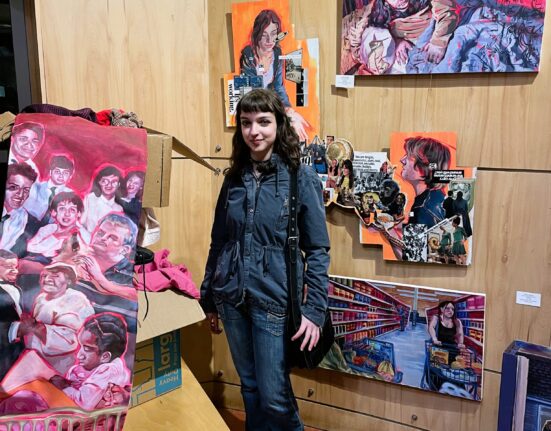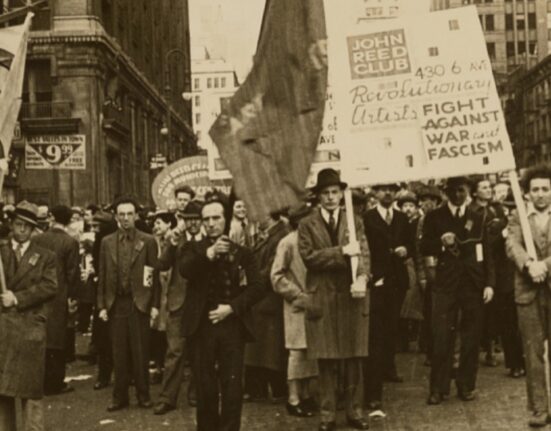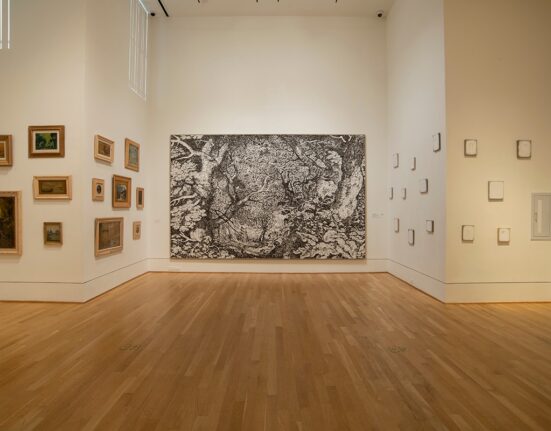Six artists have been shortlisted to create a London memorial to the victims of the transatlantic slave trade – with the public now able to vote for their favourite.
Designed to reflect on the role London played in slavery – and the way slavery shaped the British capital – the memorial artwork will be located in West India Quay in London’s Docklands, close to warehouses built to house goods produced via slavery.
“A lasting memorial to the victims of transatlantic slavery is long overdue. I’m proud that this first memorial of its kind in the UK will commemorate the victims of this barbaric practice and help educate Londoners and visitors on the role London, and the UK, played in the trade in enslaved African people,” London Mayor Sadiq Khan said when the shortlisted proposals were announced.
Khan has earmarked £500,000 (€587,000) for the memorial, which is expected to be unveiled in the summer of 2026.
These are the shortlisted artists and their proposed works:
Khaleb Brooks – ‘The Wake’
Khaleb Brooks’s immersive sculpture ‘The Wake’ takes inspiration from the shape of a cowrie shell – used as a means of exchange for enslaved individuals – to create a space of gathering, grieving, listening and remembering.
“The intention behind this work is not just to remember individual stories and hopes, but also counteract the history of forgetting embedded in colonialism,” Brooks says.
Hew Locke – ‘Memorial for the victims of the transatlantic slave trade’
“As well as the past, this memorial also needs to be about the present and the future – and children signify the future. I want to engender a sense of pride in our survival. I want the work to be delicate but hard hitting,” artist Hew Locke reflects.
Centring the experience of enslaved children, Locke proposes bronze sculptures of boys and girls processing together, wearing Carnivalor African-influenced masks.
Alberta Whittle – ‘Echoes from beneath the deep and in between the canes’
Alberta Whittle’s tactile artwork combines visual motifs from across the African diaspora, includes a sugarcane field, a Caribbean-style pavilion and cowrie shells – strikingly juxtaposed with the former warehouses of the Docklands.
“In the Americas, the Caribbean and the African continent, proof of transatlantic slavery resides in plantations, barracoons and fields of sugarcane, tobacco, cocoa and coffee. In Britain the evidence has been disguised,” the artist explains.
Grada Kilomba – ‘Archaeology of Contemplation’
In ‘Archaeology of Contemplation’, Grada Kilomba employs the image of a boat as a “metaphor of remembrance”, also incorporating poetry and bronze sculpture in the 11 metre-long concrete and stone work.
“Western imagery often associates boats with glory, adventure, freedom and maritime expansion – an era of ‘discovery’,” she says. “However, just as a continent with millions of people cannot be discovered, neither can one of the most tragic periods of humanity be erased.”
Zak Ové – ‘Nana Buluku’
Zak Ové’s vibrantly coloured and richly decorated representation of African Queen Nana Buluku – believed to accompany all deceased people on their journey to the land of the dead – stands at 11 metres tall.
“Her embodiment is mythic yet futuristic, unashamedly Black and beautiful. She is Black Pride,” Ové explains.
Helen Cammock – ‘Ripple’
“I think of water and its role in the movement of bodies. Ripples carry water, and air. They are a way to understand past action and decision effects, as they move through time. A ripple holds both absence and presence, and is not a ripple without both,” explains artist Helen Cammock.
In ‘Ripple’, Cammock creates a stone structure akin in form to a ripple engraved with texts, forming a space of encounter between the public and the experiences of enslaved people.
Members of the public can vote for their favourite to become the final piece until 19 July 2024.







